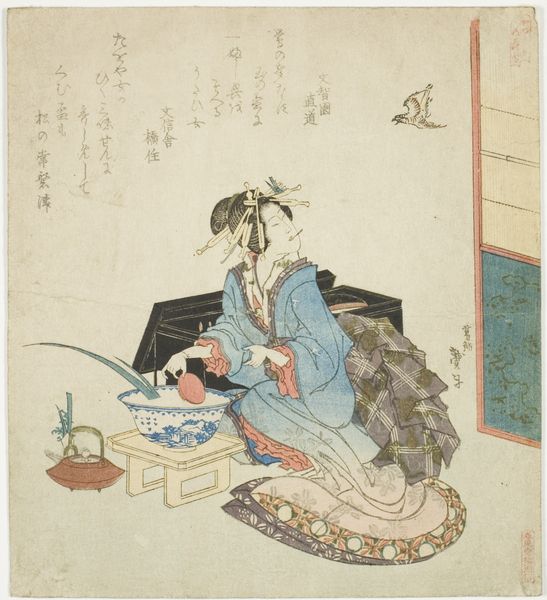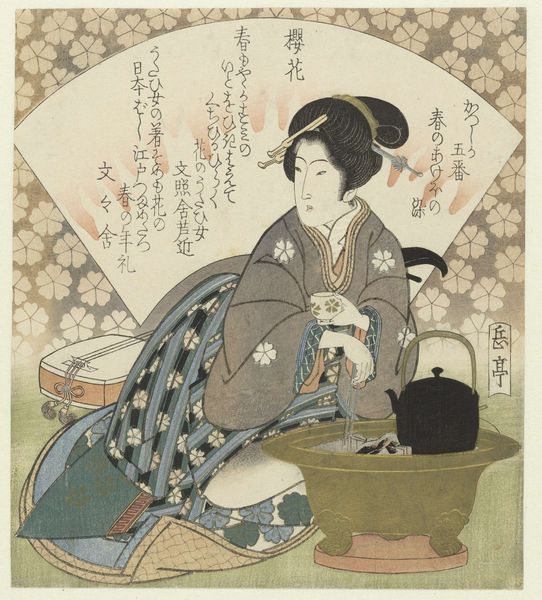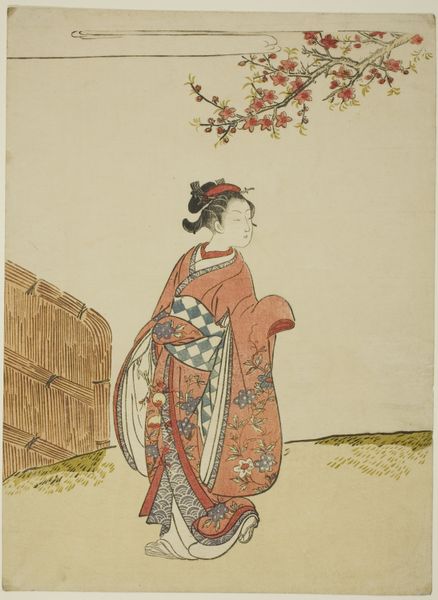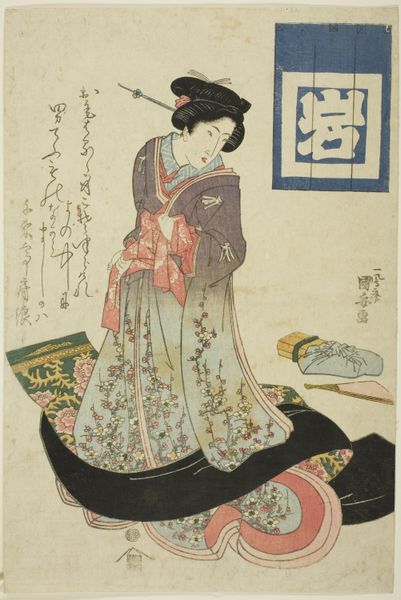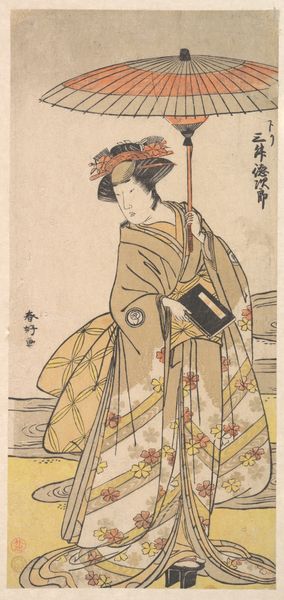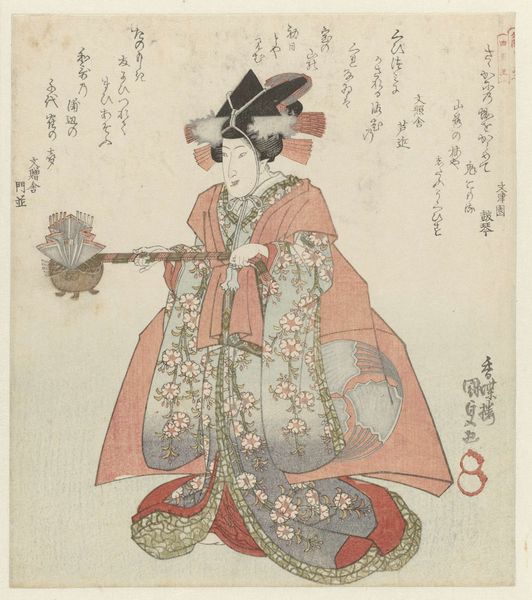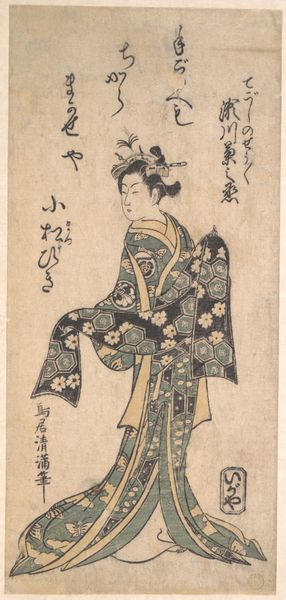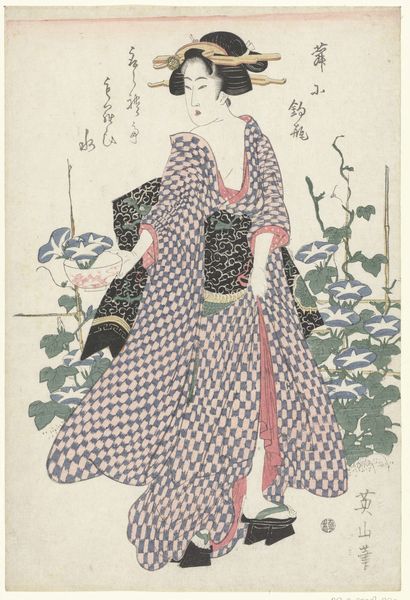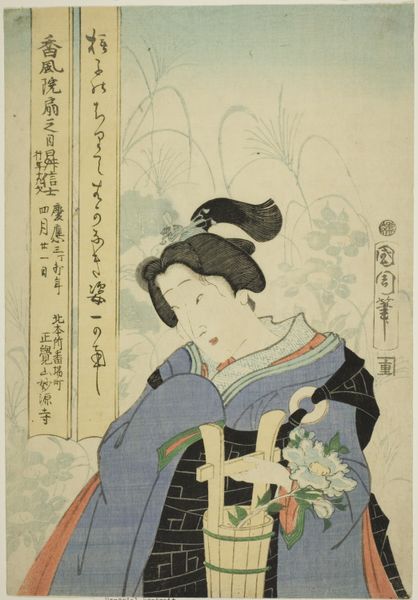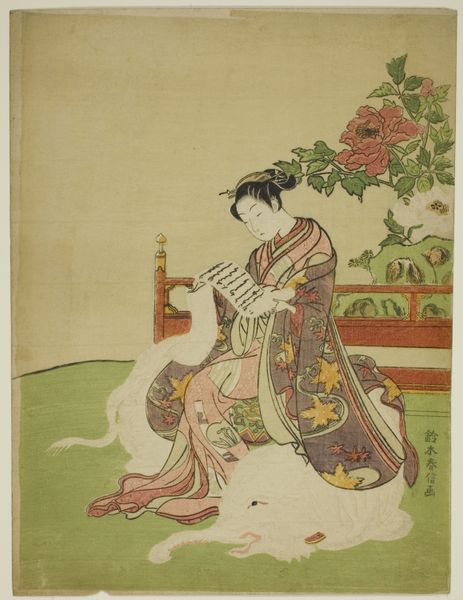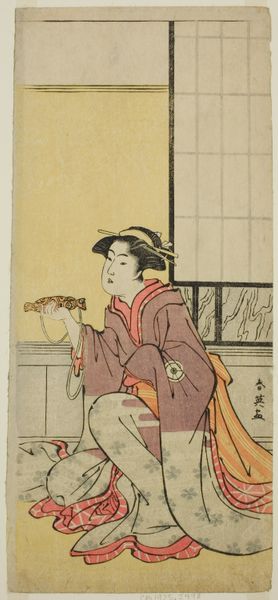
print, woodblock-print
#
portrait
# print
#
asian-art
#
ukiyo-e
#
figuration
#
historical fashion
#
wedding around the world
#
woodblock-print
#
line
#
watercolour illustration
#
genre-painting
Dimensions: height 202 mm, width 181 mm
Copyright: Rijks Museum: Open Domain
Curator: Yanagawa Shigenobu’s woodblock print, "Serveerster bij Yamabuki bloemen," created around 1827 and held in the Rijksmuseum collection, presents a tranquil, if slightly melancholic scene. The muted tones create a quiet, contemplative atmosphere. Editor: It's the figure's posture that strikes me initially. The downward gaze, the slight lean. It conveys a sense of weary grace, a contained fatigue, beautifully captured by the artist's linear style. Curator: The artist likely intended to evoke not merely a pretty scene, but also to highlight the social complexities and often rigid roles within the pleasure quarters, signified by her service as a teahouse waitress or possible geisha. The flowering shrub—Yamabuki—might also be more than decoration, suggesting seasonal transience, or even referring to the 'golden age' of such figures in their youth and peak attraction. Editor: I see what you mean. Looking closer, there's a spatial tension. The server seems confined, almost pressed between the tea house’s woven fence and the bamboo screen, reinforced by the verticality of her kimono pattern echoed by the rigid plant stems. Her fashionable garment creates depth, although her posture speaks more broadly to social restraint. Curator: Ukiyo-e prints like these frequently served multiple functions: capturing cultural ideals, subtly negotiating the limitations placed on marginalized identities and reflecting everyday moments. It portrays an almost paradoxical mix of allure and containment, inviting deeper questioning about womanhood in that era. Editor: The placement of the inscriptions also is so carefully considered! They frame and balance the image while not distracting from its main subject. We are drawn to the visual narrative rather than distracted by textual elements. Even the colors seem purposefully understated. It asks us to find significance in what’s subtly suggested, not overstated. Curator: Exactly. And viewing the piece through an intersectional lens underscores how identity is co-created at this crossroads of gender, social roles and power dynamics. Hopefully, it is inspiring viewers to appreciate the complexities of these artworks. Editor: Absolutely. When we engage with its artistry and formal subtleties together with context, we achieve a richer, far more sensitive perspective. Thanks to both, the work can breathe beyond time, still resonate today.
Comments
No comments
Be the first to comment and join the conversation on the ultimate creative platform.
